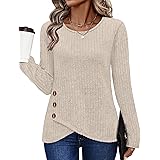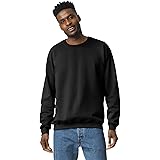Learning English often involves more than just memorizing vocabulary; it’s about understanding the subtle nuances that make your speech sound more natural and sophisticated. While you might already know many common verbs for wearing items, there are always fantastic opportunities to expand your linguistic toolkit. The brief explanation in the video above introduces you to one such versatile verb: ‘to sport’.
At first glance, ‘to sport’ might seem simple, especially when linked to clothing. However, this verb carries a delightful undertone that adds color to your descriptions. It’s not merely about putting on clothes; it’s about wearing something with a certain flair, pride, or distinctiveness. By diving deeper into its usage, you can begin to transform your everyday English into something much more vivid and engaging.
What Does ‘To Sport’ Really Mean?
When you hear someone ‘sporting’ an item, it means they are not just wearing it but actively displaying it, often because it’s new, noteworthy, or particularly striking. The core idea revolves around showcasing something with a sense of pride or prominence. Think about it: you usually wouldn’t ‘sport’ an old, worn-out t-shirt you use for cleaning the house, unless that worn-out t-shirt itself became a fashion statement. The verb implies an intentional act of presentation, making the item stand out.
This sense of “display” is crucial for grasping the true meaning of ‘to sport’. It suggests an awareness from the wearer that their chosen item is significant. Perhaps it’s a bold color, an unusual design, or something that catches the eye. The verb highlights the item itself as much as the act of wearing it, drawing attention to its unique qualities and the person’s choice to present it in public.
More Than Just Wearing: The Nuance of Sporting Clothes
There’s a distinct difference between simply “wearing a jacket” and “sporting a jacket.” When someone is ‘sporting a jacket’, it suggests that the jacket is a key feature of their outfit, perhaps brand new, custom-made, or a designer piece. It implies a certain confidence and a deliberate choice to highlight that particular garment. Imagine if someone bought a vibrant, custom-tailored suit for a special event; they wouldn’t just be ‘wearing’ it, they would be ‘sporting’ it with pride and style.
Furthermore, ‘sporting’ can also imply a sense of showing off or flaunting, though not always in a negative way. It often means carrying an item with an air of satisfaction. You might sport a new pair of shoes you just bought, eager for others to notice them. This word adds a layer of meaning that “wear” alone simply cannot convey, enriching your descriptions significantly. It’s about making a statement with your attire, whether subtle or bold, and owning that statement with confidence.
When to Use ‘To Sport Clothes’ in Conversation
Understanding when to use ‘to sport clothes’ comes down to recognizing contexts where an item of clothing is particularly distinctive or noteworthy. You might use it when describing someone wearing a brand new outfit to a party, or when a celebrity steps out in a unique designer garment. It’s perfect for situations where the clothes themselves are part of the story, not just a necessity. This verb naturally fits into descriptions of fashion, personal style, or memorable appearances.
Consider instances where a specific piece of clothing acts as a symbol. A fan might ‘sport’ their team’s jersey on game day, proudly displaying their allegiance. Similarly, an artist might ‘sport’ a hand-painted jacket to showcase their creativity and unique style. The word emphasizes the visual impact and the message conveyed by the attire. It’s an active choice, a statement, rather than a passive act of getting dressed.
Sporting Your Style: Everyday Examples
Let’s consider some everyday scenarios where ‘sporting clothes’ fits perfectly. Imagine if a friend arrives at a casual get-together sporting a brand-new, brightly colored scarf that instantly catches everyone’s attention; you’re not just noticing they have a scarf, but that they are deliberately showing off its vibrancy. Or picture a musician on stage, sporting a vintage band t-shirt that perfectly complements their edgy performance, adding to their overall stage presence. The choice of the word ‘sporting’ elevates the description, making it more dynamic.
Another common example would be someone ‘sporting’ a new haircut or a striking piece of jewelry. Think of a student who just got a fresh haircut, proudly sporting their new look around campus. Or a woman attending a gala, sporting an elegant diamond necklace that sparkles under the lights. In each case, the item is not merely present but is being highlighted or showcased, often with a sense of personal pride or a desire to make an impression.
Beyond Clothing: Other Ways to ‘Sport’ Things
While the video focuses on ‘to sport clothes’, it’s important to know that this verb has a broader application. You can ‘sport’ many other items beyond just garments. Essentially, anything that can be worn, displayed, or even possessed prominently can be “sported.” This wider understanding helps you appreciate the verb’s versatility and integrate it more effectively into your vocabulary, allowing for more descriptive language in various contexts.
For instance, someone might ‘sport’ a confident smile after receiving good news, or a brave warrior might ‘sport’ a fresh scar from a recent battle. These uses extend the concept of “displaying distinctiveness” to physical features or even abstract qualities. The key remains the idea of presenting something openly, often with a subtle implication of pride, challenge, or notoriety.
Sporting Attitudes and Features
Let’s explore this expanded usage with more hypothetical scenarios. Imagine if a scientist ‘sports’ a peculiar, enthusiastic glint in their eye when discussing their latest discovery, conveying their passion and excitement. Or consider a marathon runner who ‘sports’ a new personal best time, proudly displaying their achievement to their friends and fellow athletes. The verb adds a dynamic layer to how we describe both tangible and intangible attributes.
Furthermore, you might hear someone say an old house ‘sports’ a charming porch, meaning the porch is a distinctive and noteworthy feature of the house. Or a car might ‘sport’ a flashy new paint job, making it stand out in traffic. These examples show how ‘to sport’ can be used to highlight unique attributes or characteristics, giving them a sense of prominence and individual character within a description. It’s all about drawing attention to something remarkable.
Synonyms and Related Phrases for ‘Sporting Clothes’
To further enrich your vocabulary around ‘to sport clothes’, it’s helpful to consider some synonyms and related phrases. Words like ‘flaunt’, ‘showcase’, ‘exhibit’, and ‘display’ all carry similar connotations of intentional presentation. However, each has its own subtle differences in tone and emphasis. ‘Flaunt’, for example, can sometimes imply a more ostentatious or showy display, while ‘showcase’ might suggest a more curated or deliberate presentation.
Other less formal options include ‘don’ (meaning to put on, often with a sense of dignity or ceremony) or ‘rock’ (a modern, informal term meaning to wear with style and confidence). By understanding these variations, you can choose the perfect word to match the precise sentiment you wish to convey. Expanding your linguistic options allows you to speak and write with greater precision and stylistic flair, making your English more dynamic.
Choosing the Right Word: ‘Wear’ vs. ‘Sport’
The main distinction between ‘wear’ and ‘sport’ lies in the added layer of meaning that ‘sport’ provides. ‘Wear’ is a general verb; you simply put on clothes. You ‘wear’ pajamas to bed, ‘wear’ shoes on your feet, or ‘wear’ a uniform to work without any special emphasis. It’s the standard, neutral term for having clothes on your body. There is no implied judgment or special attention drawn to the garment itself.
‘Sport’, on the other hand, implies a more active, deliberate, and often proud act of displaying something distinctive. When you ‘sport’ a new accessory, you are drawing attention to it; you want it to be noticed. This makes ‘to sport’ a more vibrant and descriptive verb, elevating your language beyond simple statements. It encourages the listener or reader to notice the item, rather than just acknowledge its presence, adding richness to your communication.
Mastering ‘To Sport Clothes’ for Fluent English
Integrating ‘to sport clothes’ and its broader applications into your vocabulary will significantly enhance your descriptive abilities in English. Start by actively listening for this word in conversations, movies, or books, paying attention to the specific contexts in which it appears. You will find that it is used to highlight items that are new, unusual, or particularly striking, often conveying a sense of pride or deliberate display from the person.
Next, challenge yourself to use ‘to sport’ in your own sentences when talking about clothing or other items that stand out. Practice describing people and their attire with this verb to make your language more vivid and engaging. The more you consciously incorporate ‘to sport clothes’ and its related uses, the more naturally it will become a part of your everyday English, adding flair to your descriptions and helping you communicate more effectively.











